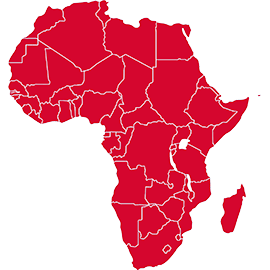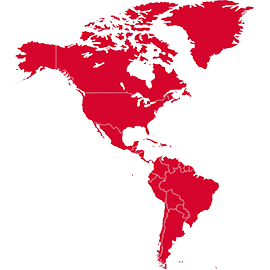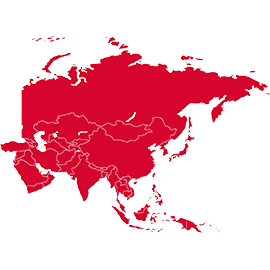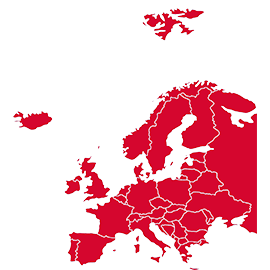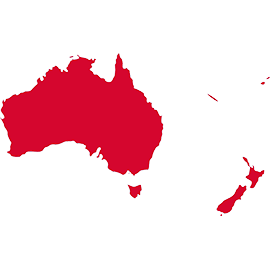Quality claims. Quite a loaded term. And yet, they happen–everywhere. However, what matters is how you handle them and, more to the point, how you prevent them from happening in the first place. Our Quality department of more than 100 colleagues is fully committed to doing just that. Spearheaded by Quality Manager Björn Vansteenkiste, they excel at preventing claims by implementing and monitoring their processes and procedures. “Because ultimately, the goal is always the same: a happy customer.”
PREVENTING BY INSPECTING
Reducing the number of claims starts with preventing them, for instance, by closely monitoring our products and services. “This is organised by setting up a number of inspection levels”, explains Björn.
“FAI or first-article inspection is the most thorough form of inspection and happens at entry control”, Björn explains. “Let’s say one of our colleagues wants to introduce a new product from a supplier. Then, we first check whether that product meets the specific quality standards we set for that type of product. So, we conduct an FAI on a sample piece, thoroughly investigating the new product and its features, including material analysis. If it gets a green light, we order the first batch, and the ball starts rolling.”
Roger Arits, Global Product Quality Manager at TVH, supervises those quality investigations. “These include material analyses on parts to confirm their quality. In the case of steel parts, we test the hardness of the material up to and beyond its theoretical breaking point. We make 3D scans of complex parts like exhaust systems and compare our scans to those of the supplier. We check the pressure of gas springs for engine hoods on tractors to ensure they are opened correctly. This is all necessary, so we can guarantee that what you order is what you get.”
So what happens when it doesn’t get approved? “Here, we have two options”, Björn explains. “We either give a red card when a new sample doesn’t meet our quality requirements, and this is where the story ends, or the new sample doesn’t pass FAI, but we see room for improvement. In that case, we provide feedback to the supplier, who can adjust where requested. The new sample undergoes a new FAI to determine the next steps.”
FIVE IN A ROW
The greenlighted new product is ready for our Goods In and the next phase of quality inspection. “Now, each new delivery gets an Incoming inspection focused on critical-to-quality (or CTQ) features. We also look for consistency: it must pass five consecutive deliveries. Once this product passes five consecutive Incoming inspections, it moves to the level where incoming products undergo a visual inspection.”
QUARANTINE
“However, if we find something wrong in our Goods In, an NCF or Non-Conformity Form is made, and we put the whole batch into quarantine, so customers can’t get a potentially defective product from this batch. We contact the supplier and discuss the possible next steps, such as returning, sorting, reworking, or scrapping the parts.”
Moreover, if the customer files a claim about a product, we contact the supplier, too, but the product returns to incoming and CTQ inspections.
CLAIM MANAGEMENT
If lightning strikes and we get a quality claim, we must help the customer as quickly as possible. Björn nods. “That’s why many initiatives within TVH focus on minimising that lead time. We contact the customer, keep them informed about the status of their claim, and work out a solution that is both fast and effective.”
“One of those initiatives is our stock control procedure. If we receive a claim for a particular product, we can immediately verify the location and status of those parts in our warehouses worldwide. If needed, we can send a signal to globally flag that product, so other customers are prevented from ordering that potentially defective part, and it allows us to perform a root cause analysis to prevent the same claim from happening.”
Next, we need to investigate where it went wrong. This means looking at the part itself. Roger explains, “We want to know what happened and why, in order to prevent it in the future. Did something happen on the supplier’s side? Did the customer not use the part correctly? Thanks to our expertise, we can find the root cause and propose a solution that is beneficial to all parties involved.”
Björn continues. “Of course, our main focus is to help the affected customer. By contacting the customer and gathering information, we can help them fairly quickly. And thanks to our stock control procedures, we can quickly determine whether his case is a stand-alone issue so that we can propose a new or alternative part for his situation.”
Which means we’ve come full circle, according to Björn. “All of our efforts have the same goal: a happy customer.”
OUR QUALITY CORNERSTONES
Want to know more about how we provide quality to you?
Jump into our other articles:
- The 4 Pillars of our Quality Management
- Unstoppable Quality Thanks To Our Partnerships
- TotalSource: our ‘Totally Convincing’ house brand – COMING SOON!
- How do you become a TVH supplier? – COMING SOON!
